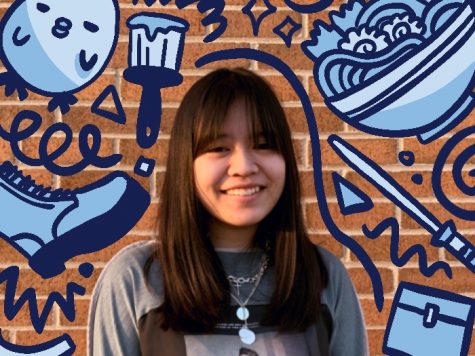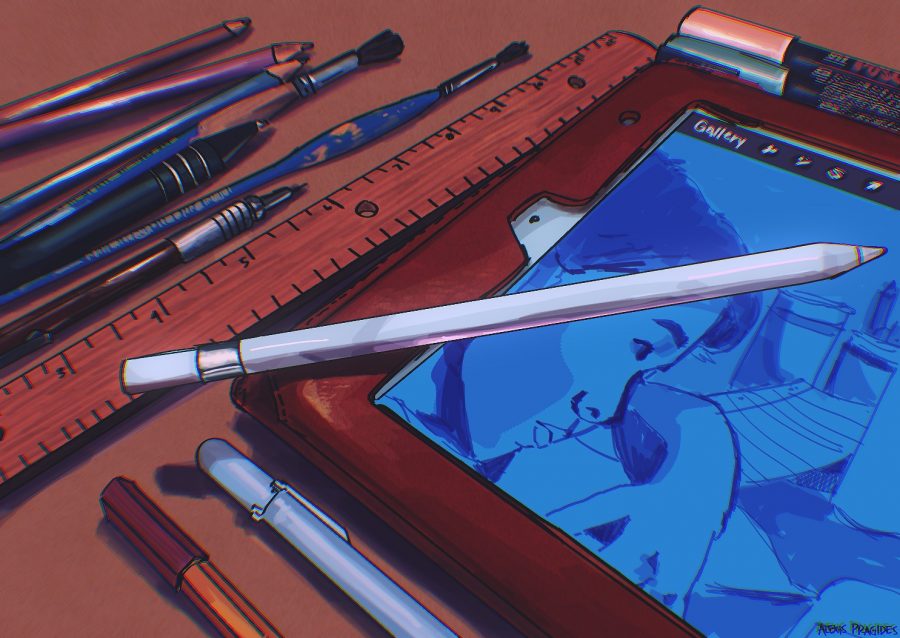Paper vs. Pixels: It’s all about preference
Traditional and digital mediums of art come in many forms such as painting, sculpture, drawing programs on tablets and more.
The debate between traditional vs. digital art has been on-going for years, and frankly, it’s dumb. I’ve drawn ever since I was a kid, always going back and forth between drawing on paper and drawing on an iPad. The medium through which an artist creates really just comes down to preference — not that one medium is better than the other.
Having a bias towards traditional art is inevitable since it’s the medium everyone encounters first, whether through art class in kindergarten or crayon drawings on the walls — it’s a person’s introduction into art.
I believe that there’s more convenience when it comes to drawing traditionally since digital art requires giant tablets that aren’t portable or iPads and Apple Pencils that’ll need charging after a certain amount of hours. With traditional art, all I need is a pencil and a sketchbook and I’m set — no worrying about a fully-charged device.
The imperfections of traditional art are also part of what makes it my preferred medium. Scribbling with a pen or the texture of painting with a brush simply can’t (yet) be recreated digitally; digital brushes are always too smooth and not natural enough.
On the other hand, favoring digital art as a medium is completely valid too.
One of the best parts about making art digitally is having literally every single color at your disposal; there is no need to mix two parts royal blue, three parts cadmium yellow and one part titanium white. You have the brightest, darkest and most neon of colors all within the pixels of your screen. The same goes for the selection of brushes which usually come with the purchase of an art program.
Traditional art elitists insist that digital art isn’t “real art” which just isn’t the truth when people have been making art out of anything and everything for centuries, yet people now draw the line at digital art? The undo button and other shortcuts might make it seem like digital art is easier, but digital art takes a whole other set of skills to learn — a transition from traditional to digital art is difficult (trust me, I’ve tried it). A medium being labeled as “easy” does not mean it’s worth any less than others.
Many artists, including myself, use both traditional and digital mediums simultaneously.
I’ll usually begin a digital piece traditionally because it’s always been easier for me to sketch using an actual pencil and paper instead of the too-smooth screen of my iPad. Then I’ll scan the sketch onto my iPad and finish the piece digitally. It’s what works best for me, and I’m sure plenty of others do it differently.
In the end, it’s all up to a person’s preferences — do they want this or that? Art is art no matter what medium it’s made from. We should judge art by its content or ideas rather than judge a piece based on whether it was made on a tablet or a canvas.


